 An Open Letter to University Presidents
An Open Letter to University Presidents
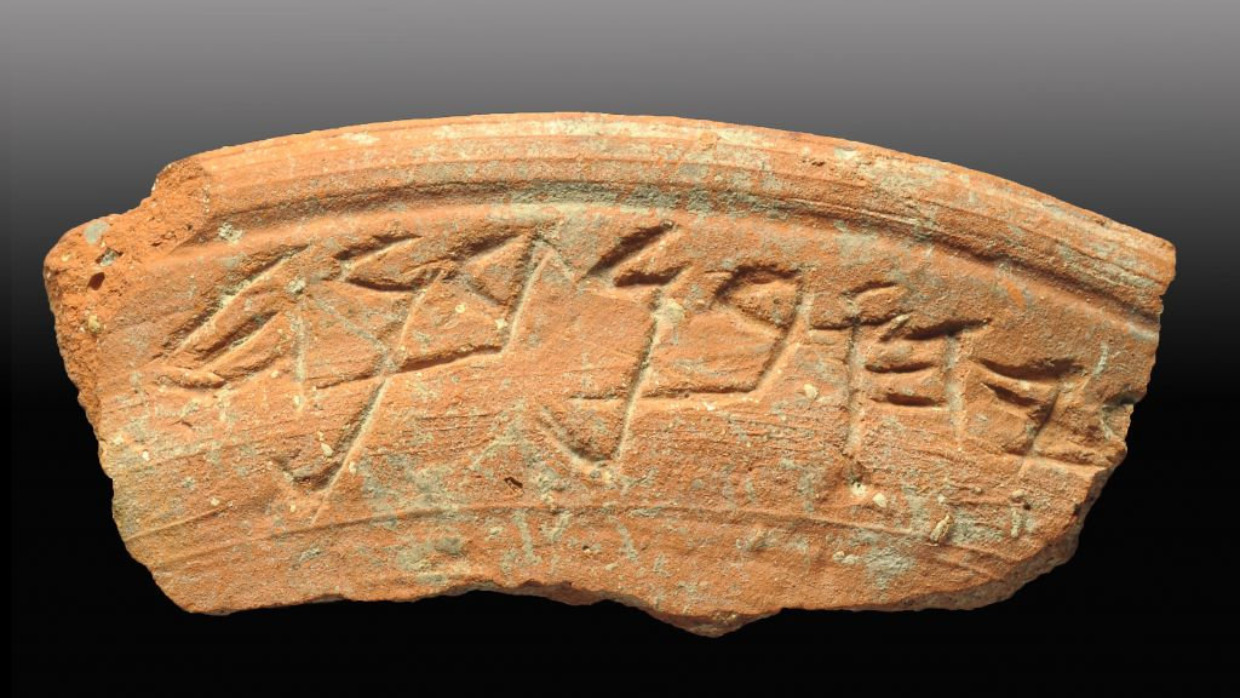

11 min read
For a hundred years scholars have been searching for the mysterious people who created the alphabet. Has the answer been under their nose all the time?
The alphabet is such a basic part of our lives (you're using it now), most of us take it for granted. But the alphabet didn't always exist and its absence enormously complicated the transfer of knowledge.
In its place were highly complex writing systems that only a privileged few could master, ensuring that most knowledge remained within a very small sphere of professional scribes and royal advisors.
Then, almost 4000 years ago, something radical happened that widely spread literacy throughout the world. The alphabet was created, eventually replacing most other types of writing.
While writing had long been in use by the Mesopotamians and Egyptians, they used convoluted systems (hieroglyphics and cuneiform) that employed nearly a thousand symbols. Despite the complexity of these scripts, they were only capable of conveying simple messages.
Cuneiform, one of the earliest known writing systems, used wedge-shaped marks on clay tablets. It was first used in Sumer (modern day Iraq) around 3500 BCE and up until the beginning of the Common Era. Cuneiform doesn't have 'letters' – instead it uses about 800 characters impressed on clay to spell words by dividing them up into syllables.

In Ancient Egypt, Hieroglyphics was the formal writing system. It combined logo-graphic, syllabic and alphabetic elements, with some 1,000 distinct characters. The first decipherable sentence written in Hieroglyphs dates to 2700 BCE.
But after more than a thousand years of highly complex Cuneiform and Hieroglyphics, a new simple form of writing was created that revolutionized communication, enabling the common man, for the first time ever, to read and write.
The idea of an alphabetic writing system was conceived only once in history, and all known alphabets derive from that seminal script. The method for creating the alphabet was fairly simple. There are some 1000 Egyptian hieroglyphs or pictures denoting words or syllables. The alphabet creators took 22 of these pictures, but instead of connecting them to their Egyptian words, they used the first letter of the corresponding Semitic word and turned it into a single letter. The modern Hebrew reader can often make out the connection between the hieroglyph and the Hebrew letter. For instance, the hieroglyph that serves as the basis for the Hebrew letter Ayin is a human eye. The symbol for a house (bayit) became the Hebrew letter Bet, the symbol for a snake (nahash in Hebrew) became the letter Nun and the symbol for water (mayim) became the letter Mem.
This new writing system was a remarkable stroke of genius. Instead of using hundreds of signs, there were now fewer than 30 to memorize, and these served to indicate single sounds. But this small number of characters sufficed to represent every single word in the language. Furthermore, instead of applying a complex set of reading rules, the alphabet offered one, fixed reading method. While containing only a fraction of the symbols of Hieroglyphics and Cuneiform, the alphabet also enabled far more intricate sentences.
How do we know how the alphabet was created? In 1905 Sir Flinders Petrie, the father of Egyptian archaeology, along with his wife Hilda, discovered several hieroglyphic-like inscriptions in ancient Egyptian copper and turquoise mines located in the southern Sinai peninsula.
Petrie initially thought these were regular Egyptian texts. But since they comprised the repeated use of a very small repertoire of the overall number of hieroglyphs, he identified these awkward signs as an alphabetic script derived from Egyptian symbols. And yet he was unable to read them.
Some ten years later the script was deciphered by the premier linguist of his day, the famous English Egyptologist, Sir Alan Gardiner. He identified the language as early Semitic “Canaanite”. The script became known as "Proto-Sinaitic" and was dated to the late Middle Bronze Age. It was later found to be in use between 1800 and 1500 BCE.
Hebrew, as the world's oldest alphabet, was first asserted in the 1920's by German Prof. Hubert Grimme, an expert in Semitic languages. Later W. F. Albright, the father of Biblical Archaeology, popularized the idea that these Semitic writings were the work of Israelite slaves.
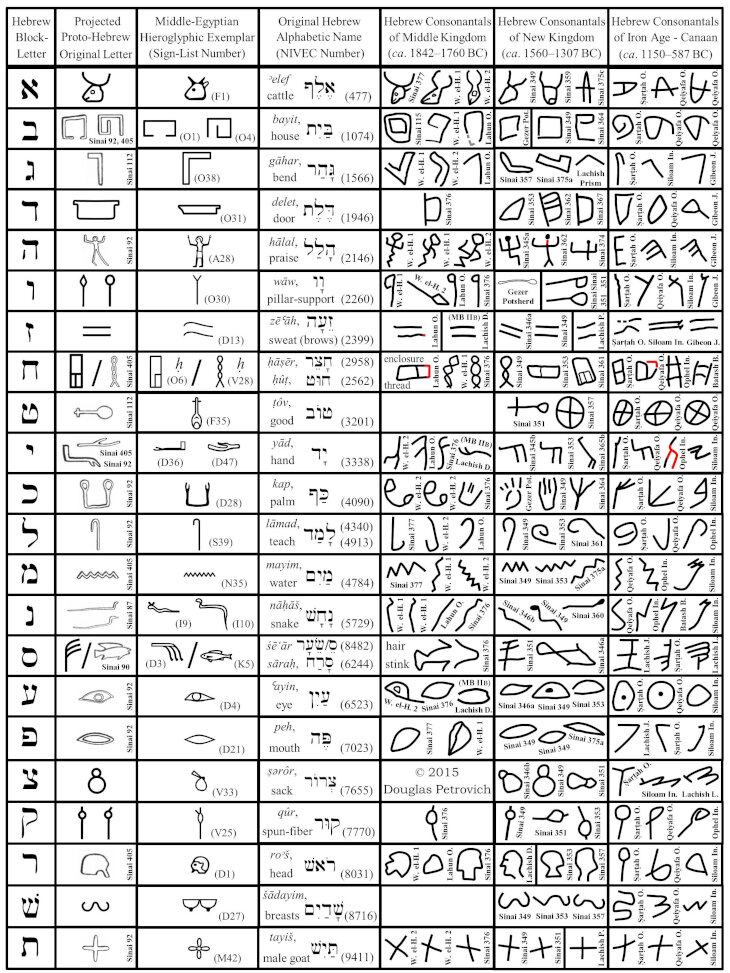
Despite early recognition of the world's first alphabet as Hebrew, this understanding was eventually rejected in favor of a Phoenician origin. During the Middle Egyptian Kingdom era there were six Semitic peoples living in the Canaanite area: Israelites, Phoenicians, Amorites, Ammonites, Moabites and Edomites. The Phoenicians (modern day Lebanon) were known as seafaring merchants who traveled between Canaan and many other lands, including Egypt. They therefore could have connected the Egyptian hieroglyphs with the Canaanite words.
The Encyclopaedia Britannica calls Phoenician, "the probable ancestor of all Western alphabets." And the United Nations claims that the Phoenician alphabet was "the prototype for all alphabets in the world."
But this is weird, because the oldest examples of the Proto-Sinaitic script significantly predate the existence of Phoenician culture and don't come from Phoenicia. Furthermore, the experts couldn't fit Phoenician words with the text. And since no other (non-Hebrew) Semitic languages were able to yield any meaningful translations either, these historically vital inscriptions languished unreadable for over a century.
Hebrew, by the way, wasn't even considered an option. The experts claimed that the Israelites in Egypt, if they existed at all, could not have been there that early. They also said that the gap between the first alphabet and earliest Hebrew writing found in the Land of Israel was just too wide. The earliest Hebrew writing, the Khirbet Keiyafa Ostracon, found near the central Israeli city of Beit Shemesh, was dated to 1000 BCE. The creation of the alphabet was at least 500 years earlier. If they were related, why weren't earlier Hebrew scripts discovered?
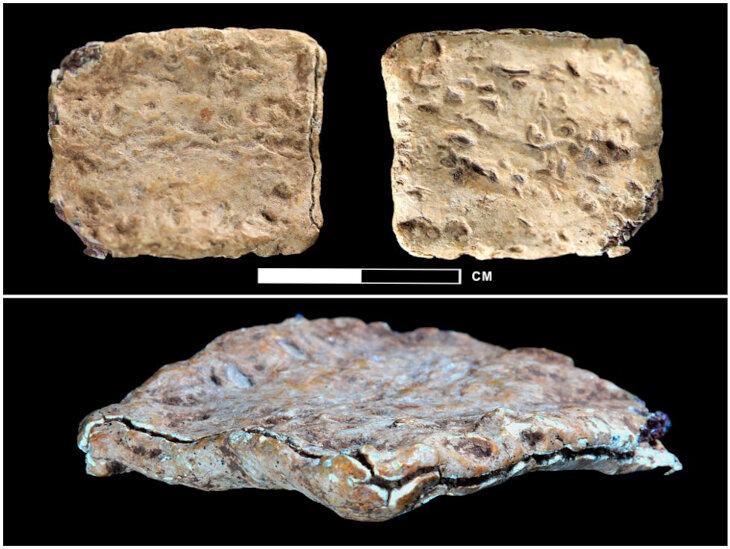 The lead curse tablet, Michael C. Luddeni | Associates for Biblical Research (ABR)
The lead curse tablet, Michael C. Luddeni | Associates for Biblical Research (ABR)
en, just two years ago, archaeologist Scott Stripling, working on Mount Ebal, just north of the Samarian city of Shechem, made an amazing discovery. His team found an ancient Hebrew curse tablet (defixio) made of a folded lead sheet about an inch high and an inch wide (2.5 by 2.5 cm). The tablet's inscription reads, "Cursed, cursed, cursed — cursed by the God Yahweh". Amazingly the tablet was found next to what some believe is Joshua's altar and in the location the Bible tells us that the Jewish people were commanded by God to curse those who violated the Divine commandments. This new find was dated to about 1400 BCE. Egyptian scarabs found the site date from the same time period. In contrast, no extant inscription in the Phoenician alphabet is older than 1050 BCE. This makes the Hebrew connection by far the closest.
The oldest Proto-Sinatic text dates to about 1800 BCE with the latest from the late 1500s BCE. After that, the alphabet stops appearing in Egypt and suddenly pops-up in Canaan. What Semitic people were known to have lived in Egypt and then suddenly moved to the Land of Israel? The scholars were mystified. In Canaan it rapidly caught on with the various peoples living there and evolved into the Paleo-Hebrew and Paleo-Canaanite scripts more familiar to scholars.
To be able to create the alphabet, the inventor had to master two very different fields of knowledge. On the one hand he had to have an understanding of written language in general and hieroglyphics in particular, such that only a royal Egyptian insider would have. On the other hand, he had to be a native Semitic speaker with a strong Semitic identity, in order to have both the ability and desire to create a Semitic alphabet. This combination is so extraordinary as to seem almost impossible and yet the Bible describes exactly such a person – Jacob’s son Joseph, who ended up becoming the viceroy of Egypt, and his two sons, Ephraim and Menashe.
The conception of the alphabet also required a high level of creativity, which the Jewish People have demonstrated in spades.
There is also a unique grammatical connection between Egyptian hieroglyphics and Hebrew. Hieroglyphics uses the definite particle (like “the” in English) to talk about a specific object. Dr. Brian Rickett of the Mikra Research Laboratory notes that, of all the Semitic languages, only Hebrew also uses the definite particle (“ha”). None of the other Semitic languages have this element.
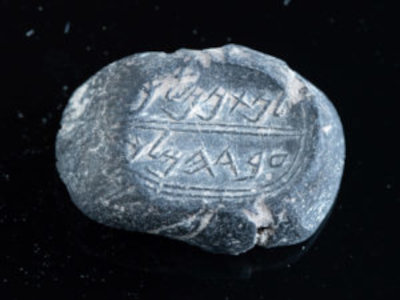
This bulla bears the words “to Natan-Melech, servant of the king.” Written in the Old Hebrew script, it dates to the sixth century B.C.E. and possibly refers to the court official mentioned in 2 Kings 23:11. Credit: Eliyahu Yanai / Public domain
Though the academic establishment has long held that the Phoenicians were behind the alphabet's creation – this assumption was recently challenged by a group of modern scholars. They say the original assumption of Hebrew was correct. These scholars include world renowned Egyptologist David Rohl, Prof. Douglas Petrovich and ancient Hebrew language expert Rabbi Michael S. Bar-Ron. Petrovich even wrote a book about his discoveries, “Hebrew – The World’s Oldest Alphabet”, by Jerusalem publisher Carta. But Petrovich and Bar-Ron went further than just identifying the language as Hebrew – they actually deciphered the texts. What they revealed was astounding.
Petrovich found references to several people mentioned in the Torah. These include Asenath – wife of Joseph, Hovav, the son of Yitro and Ahisamach – the father of Oholiav who helped lead the construction of the tabernacle and the holy ark.
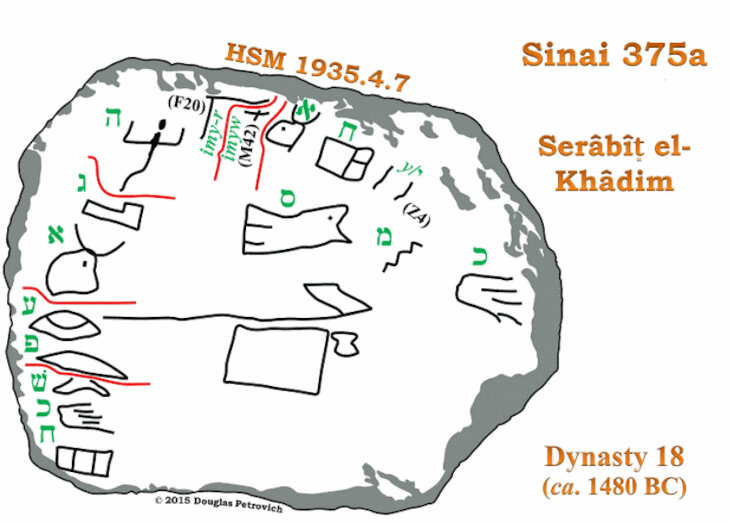
For example, according to Petrovich, the SINAI 375a inscription names Ahisamach, a master craftsman at the turquoise mines, “The overseer of Minerals, Ahisamach”. This fits in perfectly with the Biblical text, as his son Oholiab, a master craftsman himself, would have learned his skills from his father. The corresponding Biblical verse reads, "And behold, I Myself have appointed with him [Bezalel], Oholiab, the son of Ahisamach, of the tribe of Dan; and in the hearts of all who are adept I have put skill, that they may make all that I have commanded you: the tent of meeting, and the ark of testimony … " (Exodus 31:1–11)
Most incredible of all was the discovery of an inscription with a direct reference to Moses in a stone slab referred to as SINAI 361. It reads: "Our bound servitude had lingered. Moses then provoked astonishment.” Dated to 1446 BC, this inscription written by the Hebrew miners at Serabit el-Khadim in Sinai references the oppression of Israel under the 18th dynasty pharaohs and the ten plagues of Egypt.
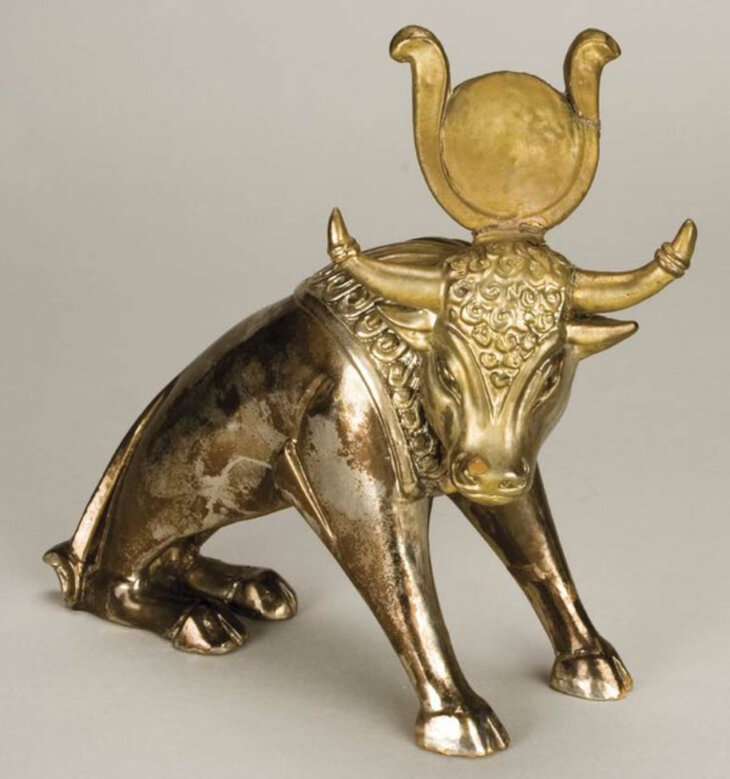
When Bar-Ron translated the SINAI 249 inscription, he found a polemic against the idol Ba`alat and the Jews who worshiped her.
Lo I cut down the gate of the Accursed One!
Those [belonging to] Ba'alat are worthless!
Give answer to our brothers:
“Shame on you that have committed this disgrace.”
They have committed sin! They have committed sin!
Ba`alat is the West Semitic name for Hathor, the golden cow goddess of Egypt and the goddess of Love. Sinai-based Serabit el-Khadim, where the inscription was found, was the location of a major temple of Hathor. It is located only three days walking distance from the traditional location of Mount Sinai. Egyptologist David Rohl noted that Ba`alat is a perfect fit for the Golden Calf that the Israelites worshiped at Sinai.
The "Hymn to Hathor", circa 1500 BCE, includes these words:
Come, oh Golden One, who eats of praise, because the food of her desire is dancing,
Who shines on the festival at the time of lighting, who is content with the dancing at night.
'Come!
The procession is in the place of inebriation, that hall of traveling through the marshes.
See how closely this matches the description in the Book of Exodus:
Exodus 32: 3 – All the people took off their (gold) earrings and brought them to Aaron. He took them and formed them into a mold of a calf. "This Israel is your god, who brought you out of Egypt!"
Exodus 32:19 – As he approached the camp, he saw the calf and the dancing; and Moses' anger waxed hot, and he cast the tablets out of his hands, and broke them beneath the mount.
Even the English alphabet we use today originated with same primordial alphabet created by the Jews in Egypt almost 4000 years ago. Future discoveries will continue to shed light on this fascinating subject.

I don’t believe there is a contradiction between the Divine use of the alphabet to create the world and the human agency by which it was transferred to man.
I will always be fascinated to learn more connecting biblical stories and
archeological support for the history of the Jews and now of the advancement
of written language on our world!
where this all leads is that Rabeinu Bachai says Reishit Chochma is the reference to before the creation of the workd God made the alef bait and used the 22 letters to create the wise world we see. So although archeologists can design findings to honor Jews w the alef bait, Rav Kook and Rabeinu Bachai and King Shlomo point to God as creating the alef bait.
It is certainly true that Genesis 1-2 is arranged according to a numerical order of the alphabet and it contains much gematria that confirms it:
https://www.shematria.com/gg
All the letters until Kaph are for the evenings of the seven days and all the rest are for the days, so to read about creation night/day/night/day/night etc you need to rearrange it:
https://blogs.timesofisrael.com/night-and-day-of-genesis-1-2-an-old-arrangement/
And there's much about this that is miraculous to me. 🙂
There is no doubt in my mind that the, the Hebrews invented the “phonetic”alphabet. Writings found that were written during there years of wandering in the Sinai lend proof to that.
Anybody interested in this fascinating topic should take a look at Rabbi Reuven Klein's classical work, Lashon HaKodesh: History, Holiness, & Hebrew. I think it was published by Mosaica Press. That is the definitive work on the Jewish perspective on the history of the Hebrew language.
B"H For a more substantive and original view of the origin of Ksav Ivri -- which is the primary name our sages of the Talmud use for the early Aleph Bes - see my talk at "Ivri Script". If you find that talk worthwhile, send an email for the latest version of the sefer. Shalom!, A. S. Adler, Jerusalem
Great information. I learned so much, I want to read more.
Thank you.
Joseph did a lot more than manage Egypt during the famine. He created an entire eco system (a parallel river/canal to the Nile, that created a monster lake about 60 miles from the Nile .. with dams to control water into the lake and feed water through another canal back to the Nile. It was the most prosperous time age of Egypt. (future rulers destroyed the work.. and the eco, season problems returned. Now they’ve disturbed the health of Egypt even more with dams in the Nile)
But Joseph created a pictorial language for his people, which filtered and was adopted and adapted into surrounding cultures.
The angels stood by and witnessed how Adam named them all correctly, first in lashon hakodesh (Hebrew) and then in all the other seventy languages which he knew intuitively. The Torah was used as the blueprint for Creation and was of course written in Hebrew. Shalom.
The Talmud and the Midrash clearly explain that Adam named all the animals. In "The Midrash Says" by Rabbi Moshe Weissman, on page 37 chapter Bereshis it says "Before HaShem created Chava, He brought all the animals to Adam so that he would realize that none of them were suited to be his mate. HaShem asked Adam to name each animal in order to demonstrate his intelligence to the angels. Before the creation of Adam the angels had questioned HaShem, 'What kind of creature will he be?' HaShem answered 'His intellect will be superior to yours'. To prove His point, HaShem first took all the animals to the angels, asking them to name each one. The angels, however, were incapable of doing so. Then HaShem brought all the animals before Adam, asking him to choose a suitable name for each one.
I loved the article... Thanks for an informative history lesson!!!
This article is a wonderful update to William Chomsky's scholarly book, "Hebrew: The Eternal Language" (c. 1957, JPS). It is also a good reminder that the original Torah was written in ancient Hebrew script (without spaces), not in the Babylonian script we are used to reading.
Without TOTAL and ABSOLUTE PROOF - or question of the origin of the alphabet - be careful that we do not ARROGATE its origins.
G
Finally.
It's about time!
I've known it for years because the NAMES of the Hebrew letters are the only ones that match the actual letter.
Isn't it GREAT when the world finally sees another example of Hashgachah Pratis (Divine Providence).
From my little bit of research into linguistics and the origin of the alphabet, it is not a mystery. The folded over "curses tablet" is highly contentious. This article might be convincing to people who don't have a sufficient background in the field to understand the whole story.
Even leading experts in the field now admit that the Phoenician theory held for the past century is false. See Rollston.
I'm convinced!
Thank you for an excellent article.
Or "seminal".
How could this be reconciled with the idea that Hebrew is the language of Creation, the original language of mankind?
That's spoken Hebrew, is it not? I don't know dates but I'm sure every spoken language preceded its written form (except maybe Esperanto and computer languages).
Noah was given dimensions to build. He must have had the Hebrew letters/numbers, perhaps given to Adam in Eden. See edenics.org. Documented proof of Gen. 11:1 given to you from mozeson@yahoo.com. Hebrew letters and roots are way more sophisticated that the Darwinist theories of eventual human invention. See any Facebook page on Hebrew.
Everyone say Hi to the guy who wrote Edenics, The Word (the Hebrew origin of the English language) and The Origin of Speeches. Which everyone with an interest in linguistics should have in their library 😀
Or someone who just happens to share a name with Mr Mozeson
Since HaShem had Torah from creation and gave it to Moshe. . .
All the nations using alphabets are indebted to Israel for their literacy. But clearly Israel received her alphabet from Hashem.
I am not a language expert, but it clearly says that Hashem "looked into the Torah and created the world." The world was created using the 22 letters of the Hebrew alphabet. The alphabet is a Divine creation. No human could have devised such a perfect, complex system, where 22 letters could represent any thought or word possible.
No human language has the ability to write " I will go" in 3 letters. None has similar opposites.The Bet doesn't look like a house. It ב and the פ Pey look like 2 lips (facing left), The difference between them is the upper lip stress of the פ P. The Creator of speech hardware is the Creator of speech software.
Excuse me but the Hebrew alphabet was created by H'!
The article does not discuss the origin of the language itself, only the written alphabet. The language and its sounds already existed; how people represented it is the issue.
Yes! Excellent article. Thank you. And this is what I've been saying all along from my corner, because the evidence is embedded in the formal system of Hebrew gematria with which the Bible (and indeed the Mt. Ebal Curse Tablet) was written. This isn't just scholarly opinion, it is proven without a doubt.
I'm not sure it was proven before now but,
clearly, the evidence was there.
Yes. The Mt. Ebal Curse tablet has been a game changer for everyone.
My research for the past several years has been into biblical gematria as a formal system of mathematics. It suggested the possibility to me because within the biblical system there are many nouns with a set value related to the name, shape, and theme of the early letters; i.e. bayit=2, rakia=3, kokabim=5, and Heh in Egypt meant a million, zera=7, nachash=50, ayin=70, etc. This 'memory' embedded in the formal system does prove the case conclusively.
The Mt. Ebal tablet was written with gematria and that allowed me to firmly date the practice, and reiterate the theory first proposed by Carl Faulmann in 1880 that the alphabet emerged from a set of numerals. He said the matter was something of an egg of Columbus.